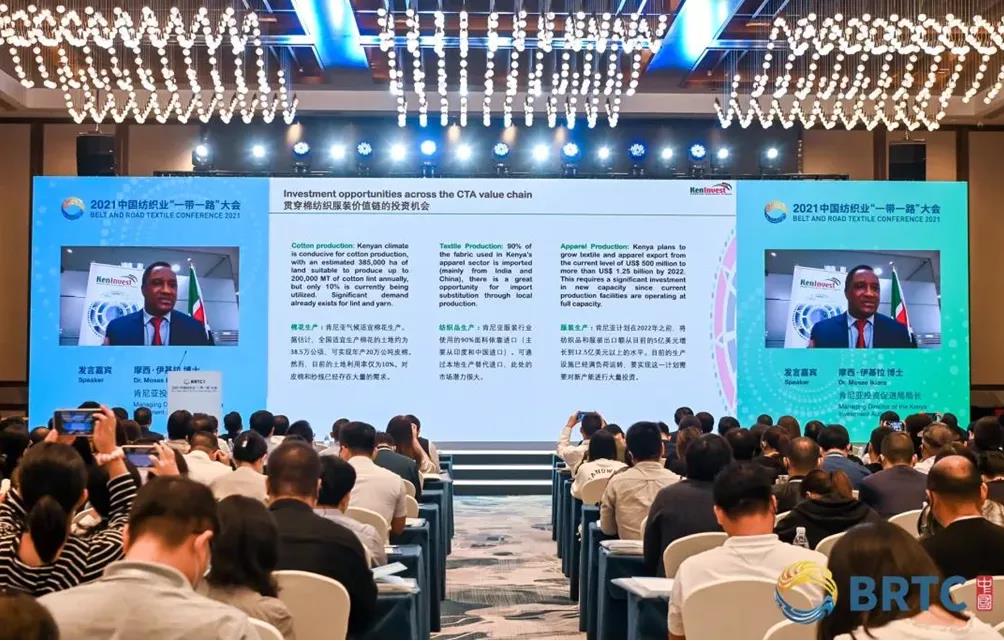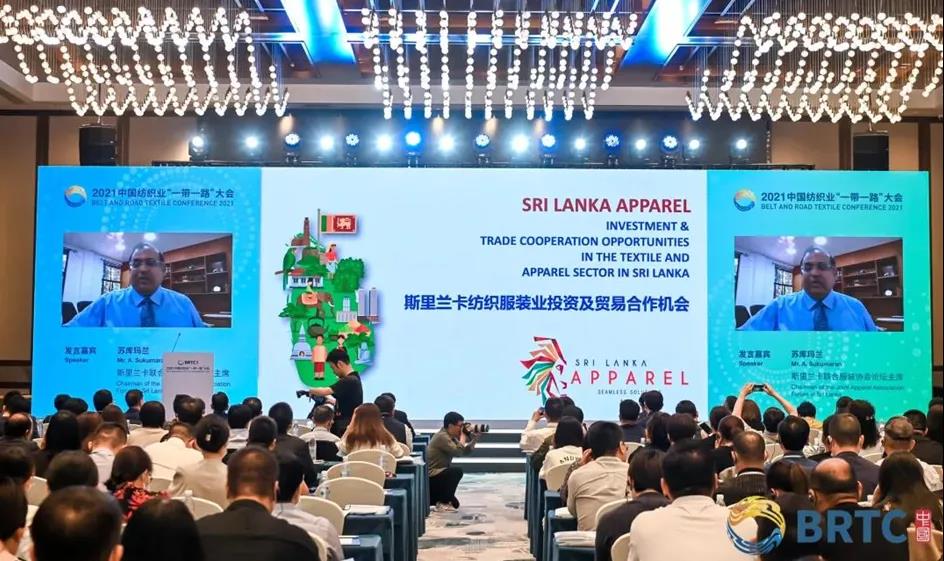At present, the economic and trade cooperation of the “Belt and Road” is advancing against the trend and is showing strong resilience and vitality. On October 15, the 2021 China Textile Industry “Belt and Road” Conference was held in Huzhou, Zhejiang. During this period, officials from Kenya and Sri Lanka government departments and business associations were connected to share online trade and investment cooperation opportunities in the local textile industry.
Kenya: Looking forward to investment in the entire textile industry chain
Thanks to the “African Growth and Opportunity Act”, Kenya and other eligible sub-Saharan African countries can enjoy quota-free and duty-free access to the US market. Kenya is the main exporter of sub-Saharan Africa’s clothing exports to the US market. China, the annual export of clothing is about 500 million U.S. dollars. However, the development of Kenya’s textile and apparel industry is still unbalanced. Most investors are concentrated in the apparel sector, resulting in 90% of domestic fabrics and accessories relying on imports.
At the meeting, Dr. Moses Ikira, Director of the Kenya Investment Agency, said that when investing in Kenya, the main advantages of textile companies are:
1. A series of value chains can be used to obtain sufficient raw materials. Cotton can be produced in Kenya, and a large amount of raw materials can be purchased from countries in the region such as Uganda, Tanzania, Rwanda and Burundi. The scope of procurement can soon be expanded to the entire African continent, because Kenya has launched the African Continental Free Trade Area (AfCFTA). ), a stable supply chain of raw materials will be established.
2. Convenient transportation. Kenya has two ports and many transportation centers, especially a large-scale transportation department.
3. Abundant labor force. Kenya currently has 20 million laborers, and the average labor cost is only about US$150 per month. They are well-educated and have strong professional ethics.
4. Tax advantages. In addition to enjoying the preferential measures of export processing zones, the textile industry, as a key industry, is the only one that can enjoy a special preferential electricity price of US$0.05 per kilowatt-hour.
5. Market advantage. Kenya has completed negotiations on preferential market access. From East Africa to Angola, to the entire African continent, to the European Union, there is huge market potential.
Sri Lanka: The export scale of the region reaches US$50 billion
Sukumaran, Chairman of the Forum of the United Apparel Association of Sri Lanka, introduced the investment environment in Sri Lanka. Currently, textile and garment exports account for 47% of Sri Lanka’s total exports. The Sri Lankan government attaches great importance to the textile and garment industry. As the only industry that can sink to the countryside, the clothing industry can bring more jobs and employment opportunities to the local area. All parties have paid great attention to the clothing industry in Sri Lanka. At present, most of the fabrics needed by Sri Lanka’s apparel industry are imported from China, and local fabric companies can only meet about 20% of the industry’s needs, and among these companies, the larger ones are joint ventures jointly established by Chinese companies and Sri Lankan companies.
According to Sukumaran, when investing in Sri Lanka, the main advantages of textile companies include:
1. The geographical position is superior. Investing in fabrics in Sri Lanka is equivalent to investing in South Asia. The size of garment exports in this region can reach US$50 billion, including exports to Bangladesh, India, Sri Lanka and Pakistan. The Sri Lankan government has introduced many preferential measures and has set up a fabric park. The park will provide all the infrastructure except buildings and mechanical equipment, including water treatment, water discharge, etc., without environmental pollution and other problems.
2. Tax incentives. In Sri Lanka, if foreign employees are hired, there is no need to pay personal income tax for them. Newly established companies can enjoy up to 10 years of income tax exemption period.
3. The textile industry is evenly distributed. The textile industry in Sri Lanka is more evenly distributed. About 55% to 60% of the fabrics are knitwear, while the others are woven fabrics, which are more evenly distributed. Other accessories and decorations are mostly imported from China, and there are also many development opportunities in this area.
4. The surrounding environment is good. Sukumaran believes that whether to invest in Sri Lanka depends not only on the environment in Sri Lanka, but also on the entire surrounding area, because the flight from Sri Lanka to Bangladesh and Pakistan is only one week, and the flight to India is only three days. The country’s total clothing exports can reach 50 billion US dollars, which contains huge opportunities.
5. Free trade policy. This is also one of the reasons why many Chinese ports come here. Sri Lanka is a country with relatively free import and export, and companies can also carry out “hub business” here, which means that investors can bring fabrics here, store them here, and then ship them to any other country. China is funding Sri Lanka to build a port city. The investment made here will not only bring benefits to Sri Lanka, but also bring benefits to other countries and achieve mutual benefits.
Post time: Oct-27-2021



